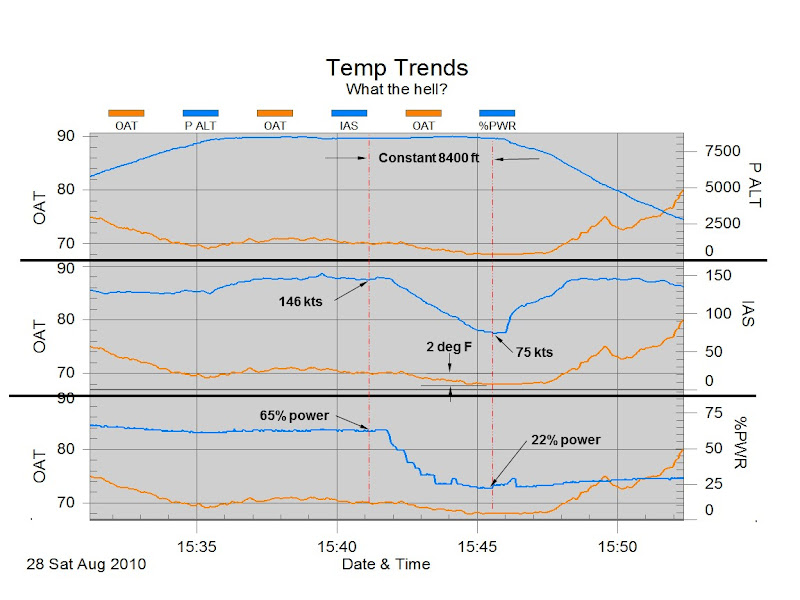Philip,
Your graph seems to show (to my untrained eye) a pretty stable set-up. Expected decrease with climb, a slight Ram/Stagnation rise (actually drop, 'cause you were slowing), and the rise on descent. It was sensitive enough to indicate the inversion, and it did not change with power settings.
Pretty good from those aspects...as far as how accurate the actual temps are, you started with it close to actual field OAT, so it sounds pretty good there too. However, temps from winds aloft may not be a good measure, as they (to my mind) cover a wider area, and may not represent your postiion's reality...as you know, winds aloft are never more than 180 degrees off

, so the temps may be a bit of a SWAG too. Not sure what would be a better tool...maybe another airplane, but who is the "control" sample?
As others have said, if we get purty close, we should be good to go!
Had an interesting talk with Paul Lipps and Jim (the gent with his prop and triangular wingtips on an RV) at Reno today. After looking at his props on the biplanes, we sat under my cowl for a while and talked cooling drag, wingtips, and lotsa neat stuff. I missed it in his earlier post here, but he pointed out that some of the NACA-placed OAT probe high temps are from hot air flowing back out of the spinner gap, and even out of the cowling half seam, and running down the side of the cowling and right into the NACA. Insulating the back of the probe in the NACA won't help there, and perhaps that's why some NACA-placed probes showed no changes with insulating. The NACA under the wing that an earlier poster mentioned as doing well would not be so affected (methinks).
By the way, Paul (and I know you'll see this) can pull those formulae he posts about right out of the air...we talked Coanda, Oswald, tip geometry, exhaust flow...man just a bunch of stuff...and he had the numbers right there! I really need to stay at a Holiday Inn Express more often! (I R A Pilot

)
I'm also interested in the installations in the wing root and the tailcone. They sound like they work well...anyone have pix? Any issues with skin heating on a sunny flight, or does the airflow keep it pretty much at ambient?
Fun discussion!
Cheers,
Bob






